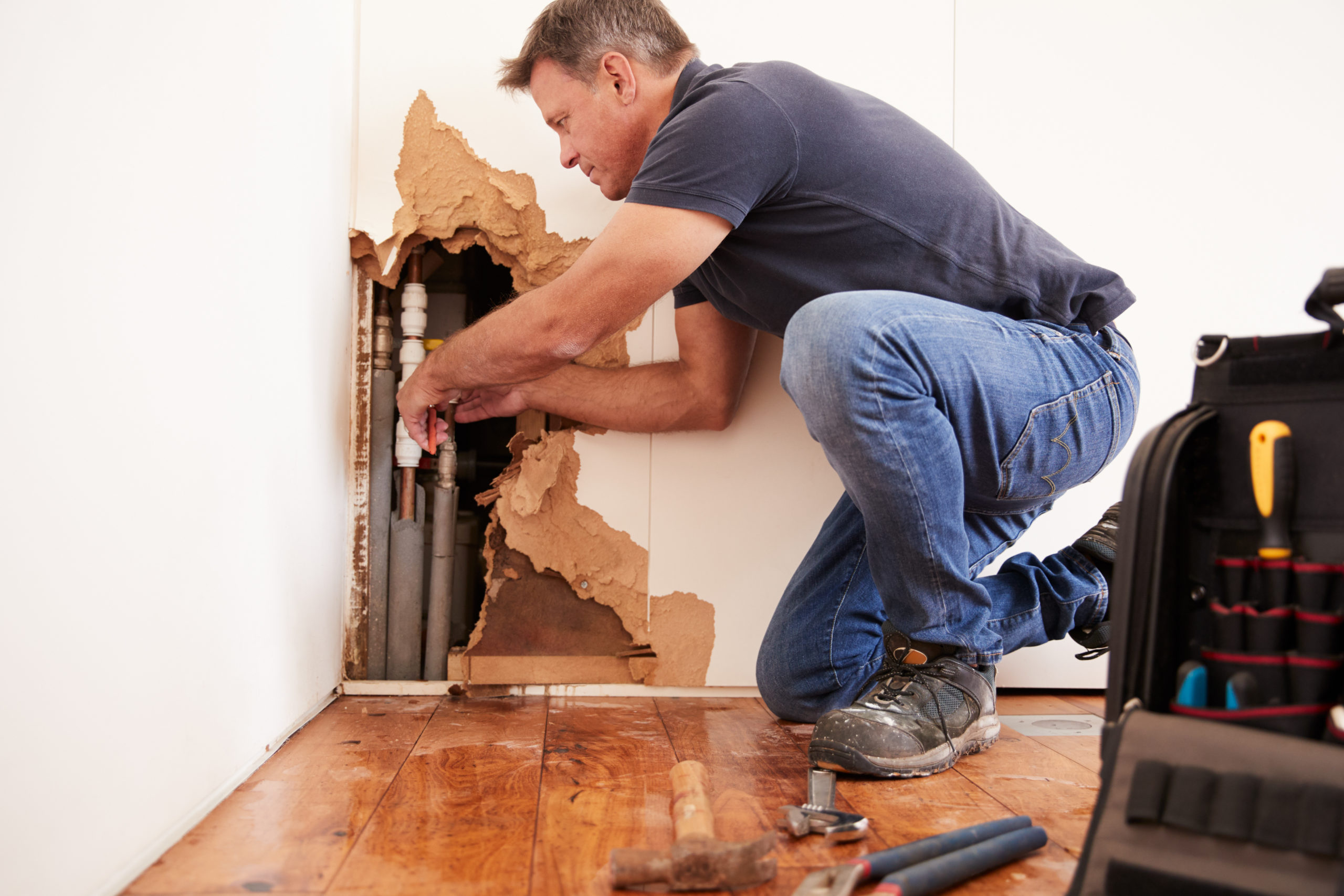Untangling the Core Concepts of Home Plumbing: A Beginner's Overview
Untangling the Core Concepts of Home Plumbing: A Beginner's Overview
Blog Article
Just about everyone has got their unique opinion when it comes to How Does the Plumbing Work in Your Home?.

Plumbing is an important facet of any kind of home, in charge of supplying tidy water for alcohol consumption, food preparation, and showering, in addition to removing wastewater safely. Recognizing the fundamentals of home plumbing is vital for every homeowner to make certain correct maintenance, troubleshooting, and, if necessary, repairs. In this novice's overview, we'll cover the basic concepts of home plumbing to aid you become much more familiar with how it works.
Supply Of Water System
The water supply system brings clean water into your home from a municipal water source or an exclusive well. It includes a primary water line that attaches to your home's plumbing system, generally situated underground. A water meter gauges the quantity of water consumed, while a shut-off valve allows you to regulate the circulation of water right into your home.
Plumbing Components
Plumbing components are devices that deliver water to numerous parts of your home and include sinks, taps, commodes, showers, bath tubs, and home appliances such as dish washers and washing makers. Each fixture is attached to the water system through pipelines and fittings and might have its shut-off shutoff for maintenance or emergency situations.
Water Furnace
The water heating system is responsible for heating water for domestic usage, consisting of showering, cooking, and cleansing. Usual types of water heaters consist of tank-type hot water heater, tankless (on-demand) hot water heater, and heatpump water heaters. The hot water heater is connected to the water system system and provides hot water to plumbing components as needed.
Drain System
The drain system removes wastewater from your home and lugs it away to a sewer treatment center or septic tank. It consists of a network of pipes, installations, and components that transport wastewater from plumbing components to the main drain line or septic tank. Appropriate drainage is important to avoid obstructions, backups, and sewer leaks.
Air flow System
The air flow system assists keep proper air pressure and prevent drain gases from entering your home. Air vent pipes, also referred to as vent stacks, prolong from plumbing components to the roof covering, permitting sewer gases to run away safely outside. Air flow pipelines likewise enable air to enter the water drainage system, facilitating smooth wastewater circulation and stopping suction or vacuum effects.
Usual Plumbing Tools
Having the right devices handy is necessary for carrying out basic plumbing repair work and maintenance jobs. Common plumbing devices consist of adjustable wrenches, monkey wrench, pliers, pipe cutters, hacksaws, bettors, augers (or drain snakes), and Teflon tape. Having these tools readily available can aid you deal with small plumbing issues effectively.
Basic Plumbing Fixings
While some plumbing repair services might call for specialist support, several common issues can be resolved with standard DIY techniques. Knowing how to take care of a leaky faucet, unblock a drain, replace a toilet flapper, or fix a dripping showerhead can save you money and time on plumbing repairs.
Verdict
Recognizing the basics of home plumbing is essential for each homeowner to maintain a safe, useful, and efficient plumbing system. By acquainting on your own with the water supply system, plumbing fixtures, water drainage system, air flow system, typical plumbing devices, and fundamental repair services, you can with confidence resolve small plumbing problems and ensure your home's plumbing system operates efficiently.
Plumbing for Beginners: A Comprehensive Guide
If you’re a beginner when it comes to plumbing, don’t worry; you’re not alone. Plumbing may seem intimidating, but with the right knowledge and a little practice, you can handle many common plumbing issues on your own. In this comprehensive guide, we will demystify the world of plumbing for beginners, providing you with the basic knowledge and skills needed to tackle common plumbing problems and even take on some DIY plumbing projects.
The Importance of Basic Plumbing Knowledge for Beginners:
First and foremost, basic plumbing knowledge gives you a solid foundation. It helps you grasp the key concepts and terminology that are essential in this field. By learning the basics, you’ll be able to build upon that knowledge and tackle more complex plumbing tasks in the future.
Having a basic understanding of plumbing also enables you to handle common issues that may arise in your home. Picture this: a leaky faucet or a clogged drain. With some basic plumbing knowledge, you’ll have the confidence to troubleshoot and fix these problems on your own. It saves you from unnecessary expenses and the hassle of waiting for a professional to arrive.
As a beginner, learning the basics of plumbing empowers you to take care of your own home. It gives you a sense of independence and self-reliance. You’ll no longer have to rely solely on professionals for every small issue that pops up. Instead, you can handle many tasks yourself, saving time and money in the process.
Remember, everyone starts as a beginner. Embrace the learning process and take small steps to expand your plumbing knowledge. There are plenty of online resources, tutorials, and even local workshops that talk about plumbing for beginners.
Essential Tools for Plumbing for Beginners
As you start your plumbing journey, having the right tools in your toolbox is crucial. Let’s explore some of the must-have tools:
Adjustable Wrench:
This versatile tool is a staple in any plumber’s toolbox. It allows you to tighten or loosen nuts and bolts of various sizes. Make sure to have an adjustable wrench with a comfortable grip.
Pipe Wrench:
A pipe wrench is specifically designed for gripping and turning pipes. It has serrated jaws that provide a strong grip, making it easier to loosen or tighten threaded pipes and fittings.
Plunger:
The plunger is a simple yet effective tool for clearing clogged drains and toilets. It creates suction when you push and pull, helping to dislodge blockages. Keep a good-quality plunger handy for those unexpected clogs.
Pipe Cutter:
When it comes to cutting pipes, a pipe cutter is your go-to tool. It creates clean, precise cuts without damaging the pipe. Look for a pipe cutter that can handle the pipe sizes you’re working with.
Hacksaw:
A hacksaw is useful for cutting through pipes, screws, and other materials. It’s a versatile tool that can handle different cutting tasks. Remember to use a blade suitable for cutting metal.
Tape Measure:
Accurate measurements are crucial in plumbing. A tape measure allows you to measure pipe lengths, distances, and dimensions accurately. Opt for a sturdy tape measure that extends a good length.
Pliers:
Pliers come in handy for various tasks, such as gripping, bending, and cutting. Slip-joint pliers with adjustable jaws are great for gripping pipes, nuts, and bolts.

We were shown that editorial on Plumbing Basics For Every Home: The HomeTriangle Guide through an associate on a different web page. Please take a moment to share this entry if you liked it. Bless you for your time. Don't hesitate to pay a visit to our website back soon.
Prices & Booking Report this page